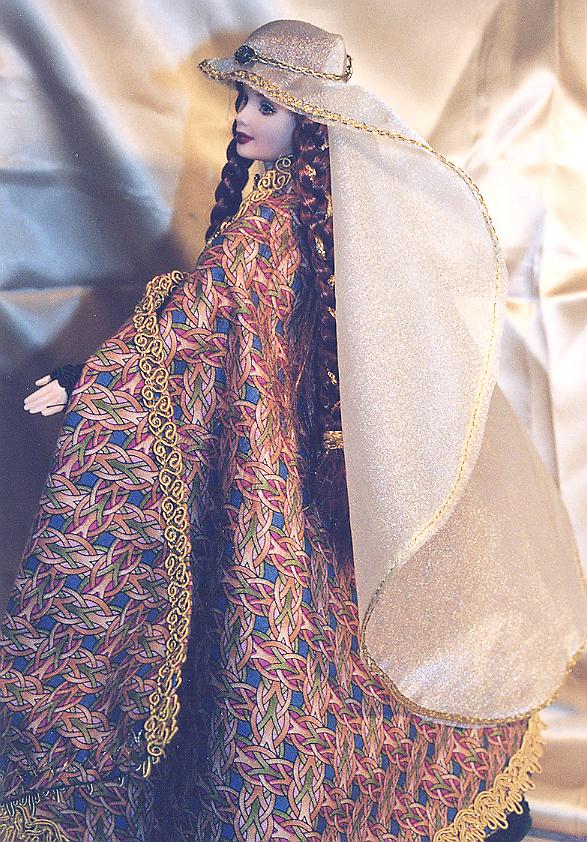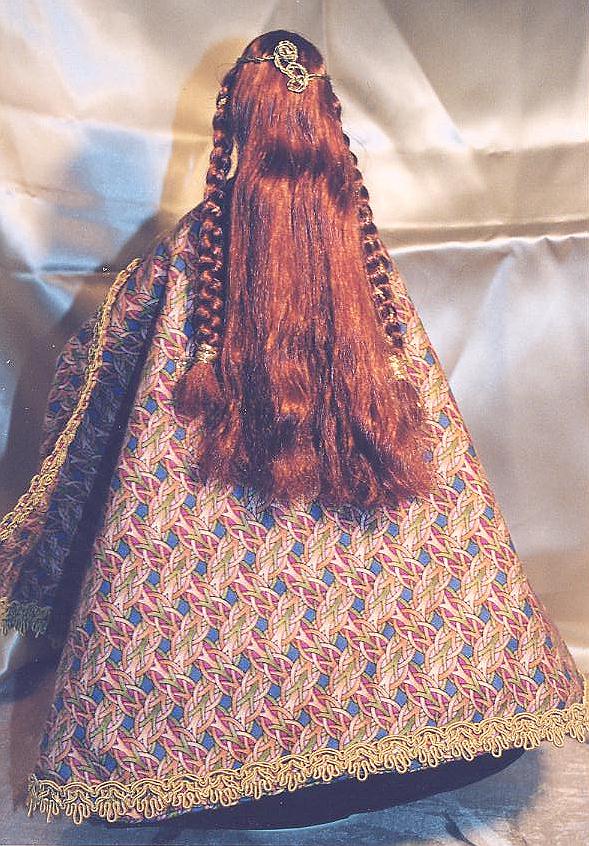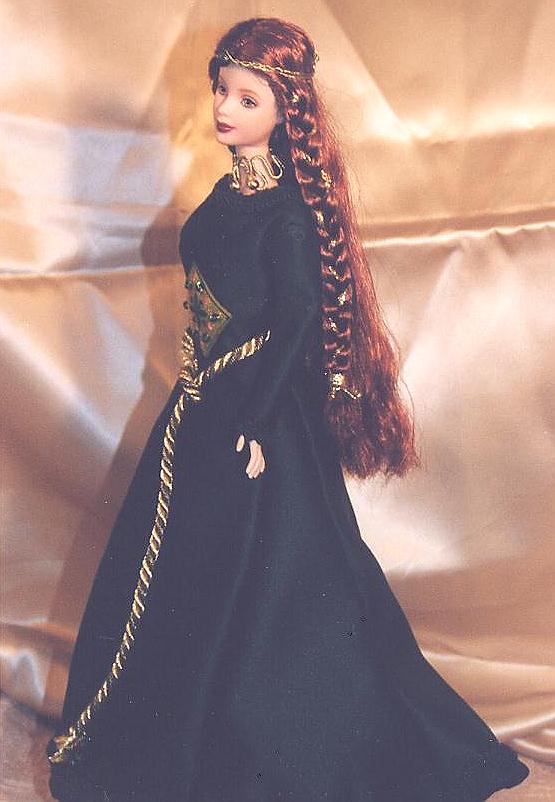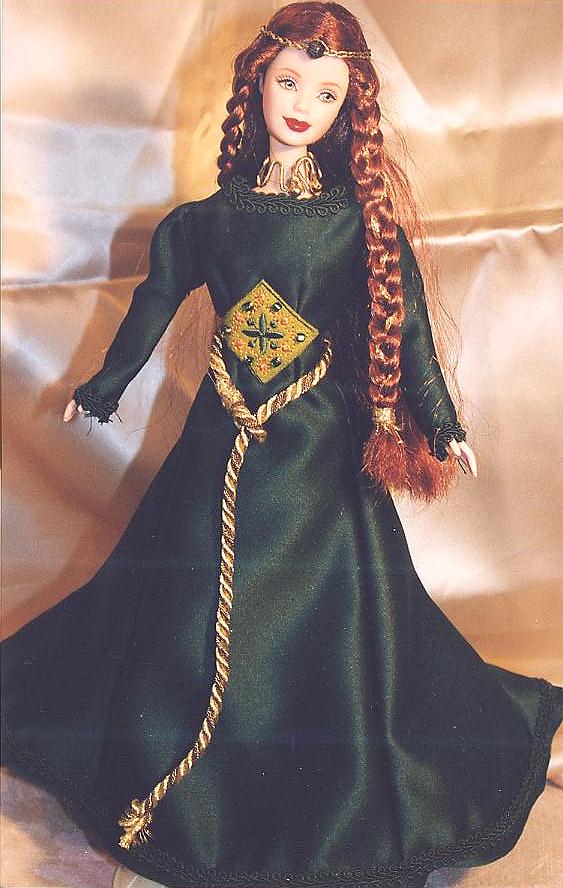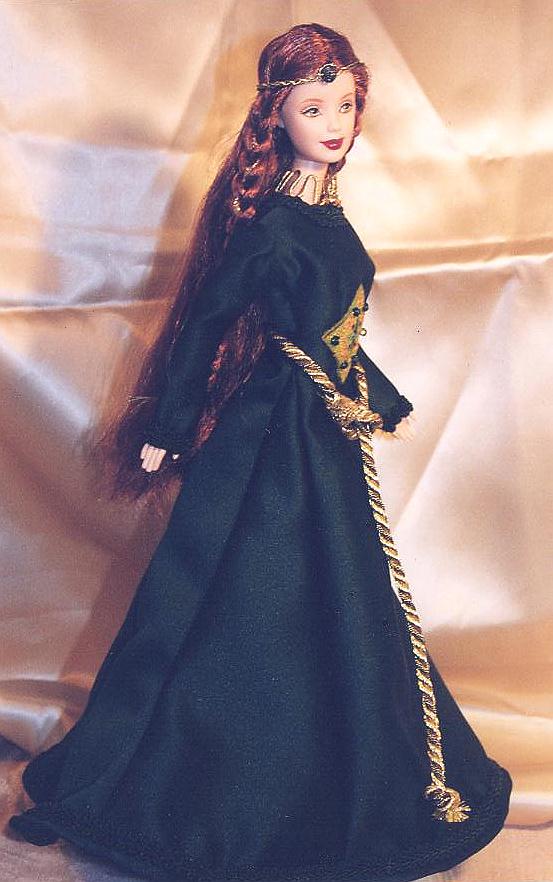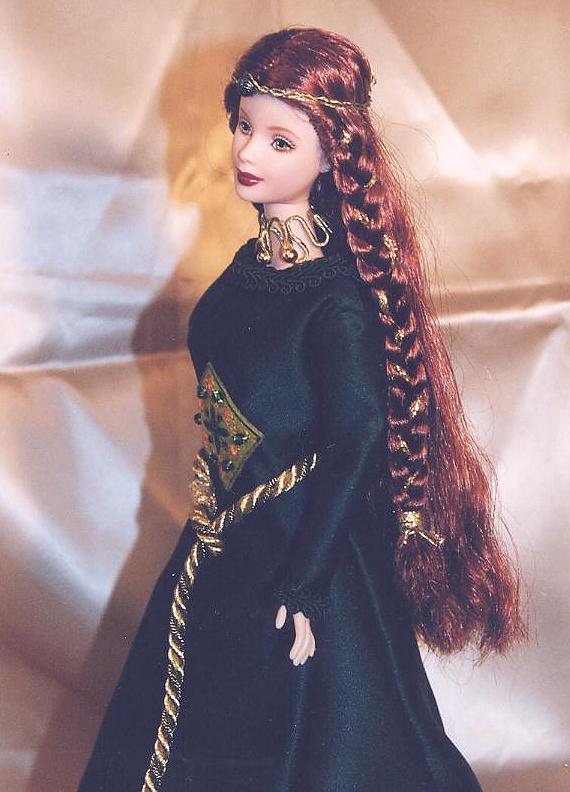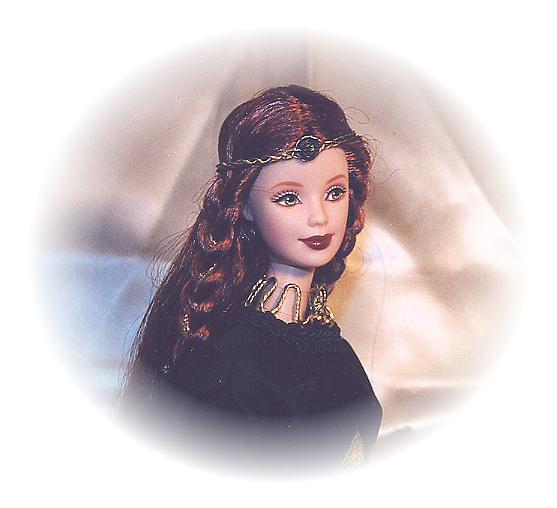 |
 |
 |
|
Ladie Faire Doll Designs
|
 |
 |
 |
|
Home | Medieval/Renaissance Designs | Antebellum "Belles" | Victorian and Edwardian Designs | Other Period Designs | Faerie/Fantasy Designs
|
 |
 |
|
25th OOAK Design:

In a cloak, that bright breast of yours--
it should not be the blackthorn brooch;
for you it is, sweet redmouthed Mór,
the one brooch of gold in Éire.
In your cloak, the proper equipment is
only a brooch of noble finndruinna
or a wondrous brooch made of gold,
sweetworded redmouthed Mór.
Oh, soft hair the color of amber,
oh, furrow in the dapplegold cloak,
oh, resolute arch which may never betray a man,
a brooch of blackthorn is not fitting.
You should sow, my heart's nut,
in [your] many-yellowed checked cloak
(her red cheeks a hard-run prize)
only a hard-to-make brooch by Goibhniu.
Crimson cheek that harrows me,
without a gold pin -- only this hour of mine
for the length of an hour, oh pure hand --
for the green cloak of your soul.
--Fearchar Ó Maoilchiaráin
trans. Maureen O'Brien

Click here for Maureen O'Brien's Medieval Irish Poetry page.
|
 |
 |
 |
 |
|
| eithne |
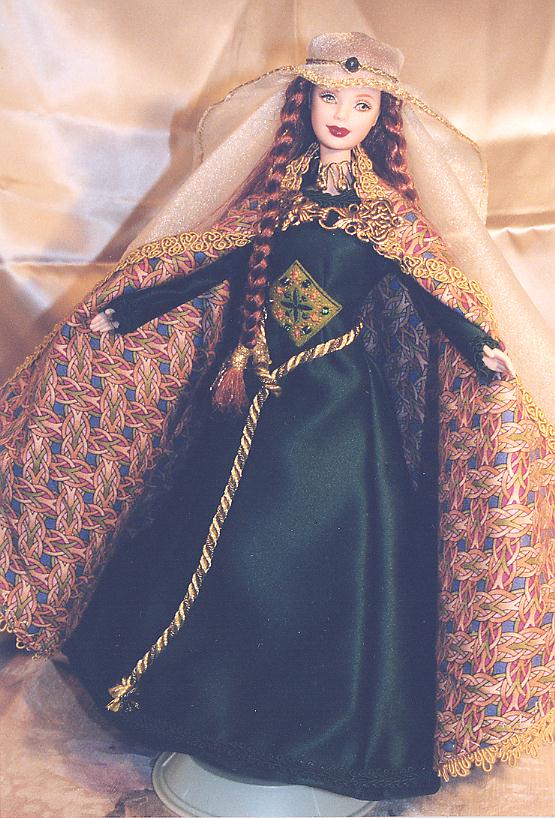
|
Eithne (in Old Irish this would be pronounced "Eth-neh"; in modern Irish the -th is silent and makes the modern
form of the name "Enya")is dressed in a style popular in the European courts around the turn of the 12th century.
In honor of St. Patrick's day I have chosen a "Celtic" theme for this doll. In the Middle Ages, the color associated
with St. Patrick during his festival was actually "St. Patrick's blue"; green only became associated with the holiday
in the 19th century. However, medieval people, including the Irish, enjoyed bright colors in their clothes, and green was
a popular dye for clothing, and it looks especially well with this doll's copper hair and green eyes! The bright and intricate
pattern on the material of her mantle reminded me of the interwoven designs popular in Irish manuscripts, such as the Book
of Kells. Gold was the metal of choice for jewelry and fittings for the upper classes, brightly burnished gold, which we
would today describe as "yellow gold" was often referred to in medieval poetry as "red gold," and was
intricately worked in twisting, interwoven designs often based on flora and fauna in the Celtic style. Gold and fine materials
were an obvious indication of wealth and social prestige, and marks this young lady as a member of the aristocracy.
| Eithne |
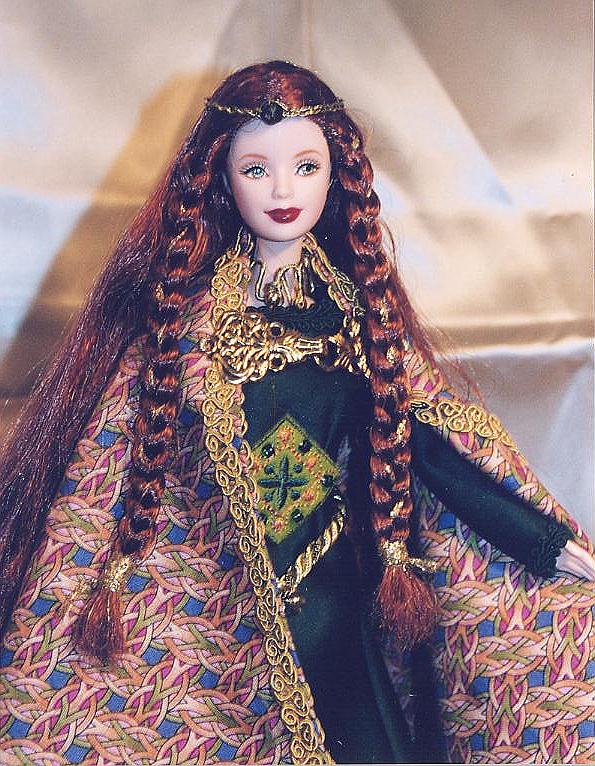
|
|
 |
|
 |
 |
 |
|
|
|
 |
 |
 |
|
 |
 |
 |
|
Here's one of the pictures that inspired this design; it represents a Norman lady from about the 1080's.
| A woman from the reign of William the Conqueror |
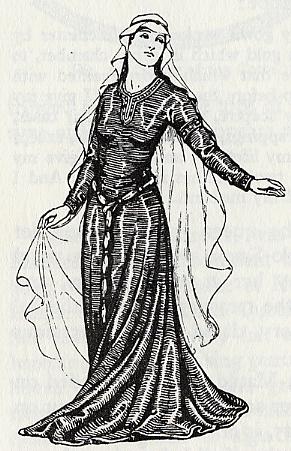
|
| from "Medieval Costume and Fashion" by Herbert Norris |
|
|
 |
 |
 |





